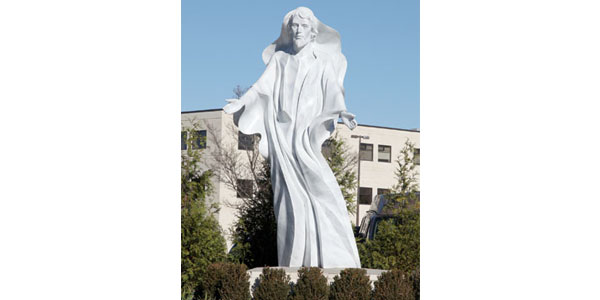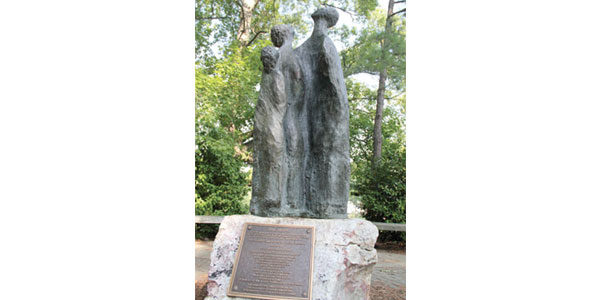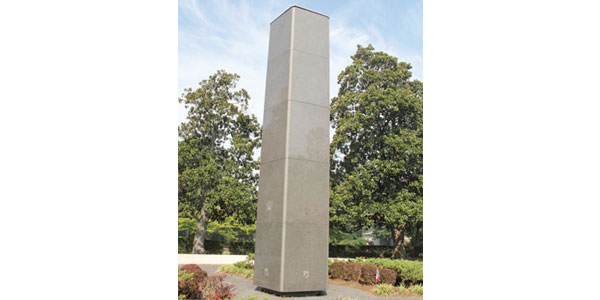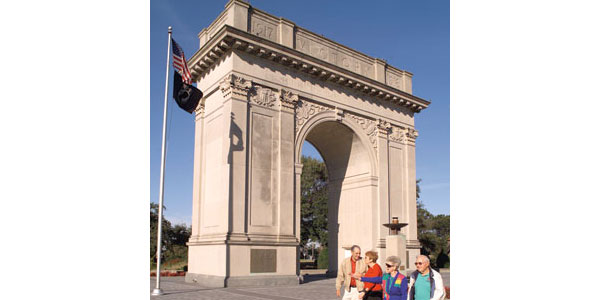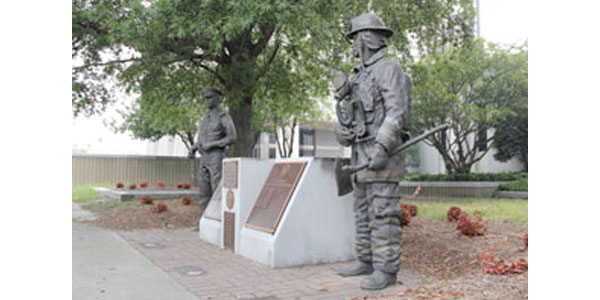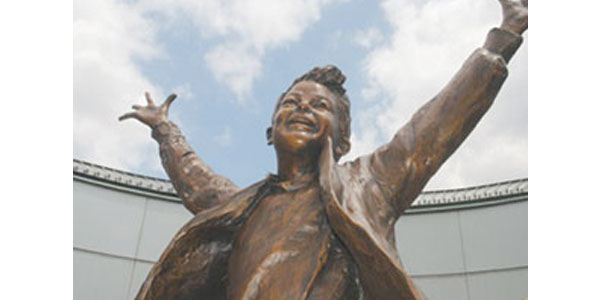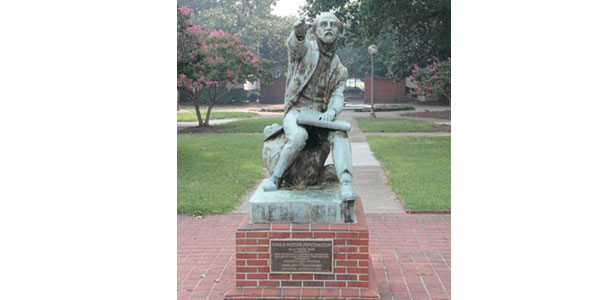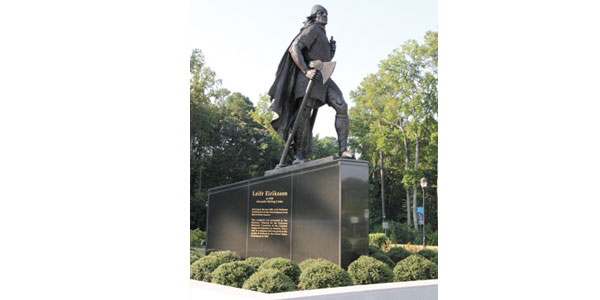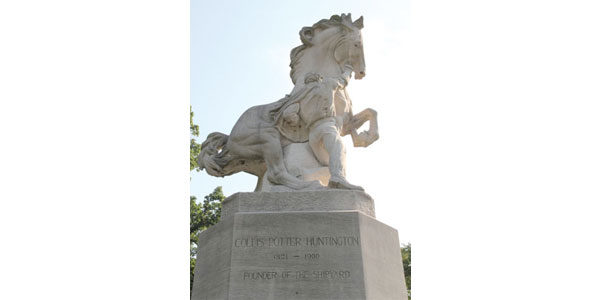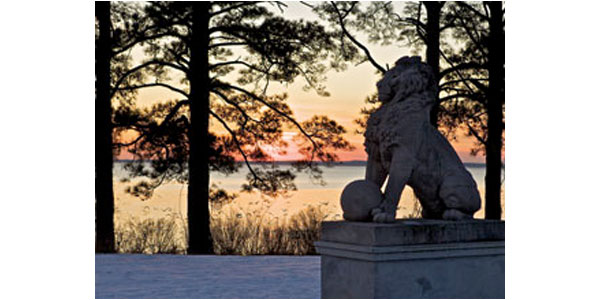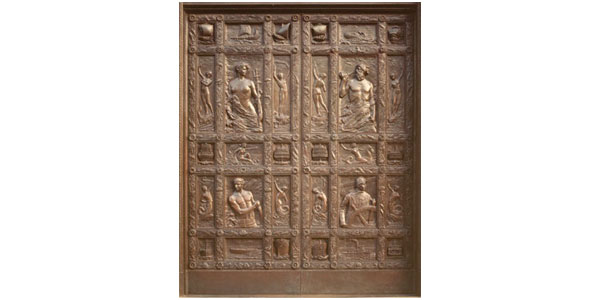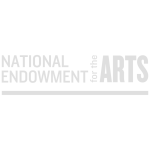ABOUT
OUR MISSION
The Foundation’s mission is to bring the finest public art to Newport News that educates, transforms and inspires.
From Idea to Installation and Beyond
 The process of bringing a sculpture to life is a harmonious convergence of various elements—from the inception of an idea to the final installation. This intricate dance involves identifying opportunites, engaging an artist, securing funding, and ensuring a seamless integration of art into the cityscape.
The process of bringing a sculpture to life is a harmonious convergence of various elements—from the inception of an idea to the final installation. This intricate dance involves identifying opportunites, engaging an artist, securing funding, and ensuring a seamless integration of art into the cityscape.
High-visibility locations take precedence, ensuring that art becomes an integral part of daily life. However, some pieces, like the evocative Memory of Green, find solace in more intimate settings, nestled among trees outside an office complex.
The delicate art of pairing a site with a specific artwork involves a meticulous understanding of both. The bold lines of Elements and Spring Breeze can be appreciated with fleeting glances from passersby, strategically placed for optimal visibility. Izar’s soaring verticals find a fitting home at the airport’s entrance, while the industrial allure of Reinvented complements an office park. Spirit of Life‘s serene presence graces hospital grounds, and Build a Dream symbolizes community aspirations in a revitalization project.
The pivotal role of funding also emerges as a crucial step in bringing these artistic visions to fruition. Whether through community support or developer contributions, each sculpture finds its financial backing, creating a symbiotic relationship between art and its surroundings.
The grand finale of this artistic odyssey is the installation, a collaborative effort involving architects, engineers, and construction crews. Rigorous planning ensures the secure placement of sculptures, with crane and rigging specialists delicately lifting and positioning thousands of pounds of art. Collaboration with lighting designers adds a nocturnal dimension, illuminating the pieces in a carefully orchestrated dance of light and shadow. Tailored landscape designs and in some cases custom benches complete the tableau, inviting residents to pause and savor the artistic tapestry woven into the city of Newport News.
Our work doesn’t end with installation. Through outreach and education, we engage the community with the collection so that it serves as part of Newport News’ ongoing cultural life. We strive to stimulate deeper connections with the collection by encouraging people to notice, study, and find meaning in and inspiration from the art that is all around them. This is achieved through educational and interpretive materials we develop and distribute as well as in-person engagement.
As with anything in the public realm, public art requires care and maintenance. We strive to keep the sculptures, landscaping, and lighting in good condition so that they can continue to be a source of pride and enjoyment now and for years to come.
- How We Work
- Who We Are
- The Case For Public Art
- Great Art in Great Cities
- Percentage for the Arts
- Other Public Art
The process of bringing a sculpture to life is a harmonious convergence of various elements—from the inception of an idea to the final installation. This intricate dance involves identifying opportunites, engaging an artist, securing funding, and ensuring a seamless integration of art into the cityscape.
High-visibility locations take precedence, ensuring that art becomes an integral part of daily life. However, some pieces, like the evocative Memory of Green, find solace in more intimate settings, nestled among trees outside an office complex.
The delicate art of pairing a site with a specific artwork involves a meticulous understanding of both. The bold lines of Elements and Spring Breeze can be appreciated with fleeting glances from passersby, strategically placed for optimal visibility. Izar’s soaring verticals find a fitting home at the airport’s entrance, while the industrial allure of Reinvented complements an office park. Spirit of Life‘s serene presence graces hospital grounds, and Build a Dream symbolizes community aspirations in a revitalization project.
The pivotal role of funding also emerges as a crucial step in bringing these artistic visions to fruition. Whether through community support or developer contributions, each sculpture finds its financial backing, creating a symbiotic relationship between art and its surroundings.
The grand finale of this artistic odyssey is the installation, a collaborative effort involving architects, engineers, and construction crews. Rigorous planning ensures the secure placement of sculptures, with crane and rigging specialists delicately lifting and positioning thousands of pounds of art. Collaboration with lighting designers adds a nocturnal dimension, illuminating the pieces in a carefully orchestrated dance of light and shadow. Tailored landscape designs and in some cases custom benches complete the tableau, inviting residents to pause and savor the artistic tapestry woven into the city of Newport News.
Our work doesn’t end with installation. Through outreach and education, we engage the community with the collection so that it serves as part of Newport News’ ongoing cultural life. We strive to stimulate deeper connections with the collection by encouraging people to notice, study, and find meaning in and inspiration from the art that is all around them. This is achieved through educational and interpretive materials we develop and distribute as well as in-person engagement.
As with anything in the public realm, public art requires care and maintenance. We strive to keep the sculptures, landscaping, and lighting in good condition so that they can continue to be a source of pride and enjoyment now and for years to come.
Board of Directors
Jeff Stodghill, AIA
Principal, PMA Planners and Architects
Chair
Sandy Bridgman
CEO, Waters & Bridgman Marketing Solutions
Vice Chair
Beth W. Moore, CPA
Managing Member, Beth W. Moore, CPA, PLLC
Treasurer
Martha Hightower
Community Volunteer
Secretary
Robert L. Freeman, Jr.
President, Tower Park Corporation
Founding Chair emeritus
John C. Allen III
Community Volunteer
Eric Bailey
Landscapes by Eric Bailey
Herbert H. Bateman, Jr.
Executive Vice President, TowneBank
Caitlin Blomstrom
Artist
Anne Noland Edwards
Community Volunteer
The Honorable John R. Eley III
Councilman, City of Newport News
Ex Officio
Irving B. “Chip” Goldstein, Esq.
Goldstein, Edgar, Reagan, Roberts & Saville
William “Bill” Grace
Community Volunteer
Jo Louise Harding
Community Volunteer
Susan Harris
Community Volunteer
Professor Gregory Henry
Sculptor, Artist, Associate Professor, Christopher Newport University
Asa Jackson
Artist and Curator, Contemporary Arts Network
Holly Koons
Executive Director, Mary M. Torggler Fine Arts Center
Diana LoVecchio
Community Volunteer
Akshar Patel
Architectural Designer, PMA Architecture
Karen Turner Ward, Ph.D.
Professor, Hampton University
Tom Wessells
Artist
Gina Fitzhugh Wilson
CRS, Broker/Owner, Fitzhugh-Wilson Real Estate
Staff
Elizabeth Carriger
Interim Executive Director
The Case For Public Art
A city isn’t livable just because it has good jobs and housing, a nice mix of entertainment and recreation. It’s also important to feed the spirit; the arts do that.
When news shows want to let viewers know they’re talking about Wall Street, they lead with a spot of the bronze bull that’s poised nearby, ready to charge into prosperity.
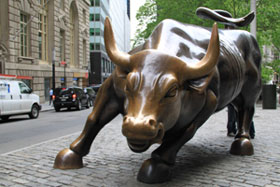
Charging Bull by Arturo Di Modica, photo by David Prior
Generations have made pilgrimages to see the Vatican’s Pietá, and modern travelers document their visits to the City of Brotherly Love by snapping photographs in front of Philadelphia’s pop-art tribute to love.
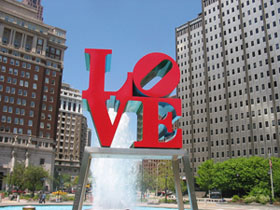
Love by Robert Indiana
Public sculpture memorializes what we think is important; it lifts our spirits, it centers our civic life, it makes our world more beautiful.
Public art does many things for a city:
- It inspires pride.
- It marks special places and adds a grace note to ordinary places.
- It offers residents and visitors a source of enjoyment that’s always open, always accessible.
- It defines a sense of place and identity. It creates landmarks, and even icons that come to stand for a city. An arch’s sweep says St. Louis, the Trevi Fountain is instantly identifiable as Rome, and with just a glimpse of a stone obelisk, you know the setting is Washington, D.C.
Great Art in Great Cities
We expect to find great art in great cities. From ancient Athens where the Parthenon’s designers paid tribute to the goddess Athena, to the ever-changing outdoor exhibition in modern New York, one of the things that breathes life into beautiful cities is the art on display in streets, squares and parks.
Fortunate people don’t have to travel far to enjoy quality art. Their cities have made a decision to incorporate sculpture into public places for the enjoyment of residents and visitors. Here are some of them:
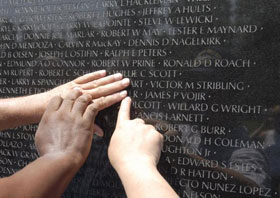
The design of the Vietnam Memorial acknowledges our need to experience, at close hand, our connection to this part of our history. UP photo/Kevin Dietsch
We could scarcely imagine Washington, D.C. without its monumental sculptures. Lincoln in his chair has been the backdrop for some of the nation’s important moments, and the hush of the Jefferson Memorial connects visitors to the spirit of this man and the principles that framed this nation.
With the simple reverence and profoundly personal focus of the Vietnam Veterans Memorial, Maya Lin changed the way the public interacts with memorial sculpture. In the slogging figures of the Korean War Veterans Memorial, and the blend of words and statues in the memorials to Franklin Delano Roosevelt and Martin Luther King, Jr., the nation has found new ways to reflect its evolving history and honor those who shaped it.
Learn more about Washington’s many memorials by clicking here.
New York City is home to a lot of people — and a lot of art that’s out in public for their enjoyment and that of the millions more who visit the city each year. See some of it here.
Albuquerque’s rich offering includes mosaics and murals as well as sculpture; see more here.
Seattle has made public art a priority. Even fire stations and manhole covers show off an artistic touch. Learn more by clicking here.
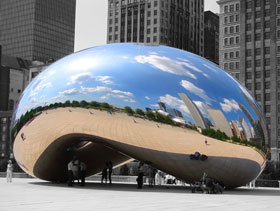
Cloud Gate by Anish Kapoor, photo by Ermanec
You don’t have to enter a gallery to see the work of great artists in Chicago. Sculptures by Miro, Calder and Chagall are on display outdoors, and the ever-changing show in Millennium Park introduces tomorrow’s Picassos to today’s pedestrians. For more information on the City of Chicago’s art click here.
Portland, Oregon boasts of a rich offering of art, outdoors and in civic buildings; see more here.
Airports are full of people on the move, a ready audience for public art. The new Denver airport has a remarkable collection, some of it controversial. See examples here.
When Sacramento planned a new terminal at its airport, it set aside $6 million for a dozen pieces of permanent art. The busy Philadelphia airport showcases both permanent and rotating art.
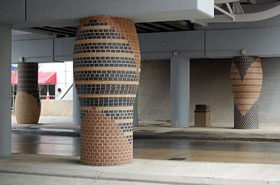
Brick cladding for bridge supports by Andrew Leicester
Airports aren’t the only places with lots of travelers – and art for them to enjoy. When Charlotte, North Carolina, built a new light-rail system, it incorporated art into every station, much of it in functional forms such as benches , drinking fountains, lights, floors, elevator enclosures and columns. See more here about how Charlotte surrounds transit riders with art.
Percentage for the Arts
Great art has happened in many places because leaders made it happen. One of the most effective ways cities have found to do that is with “percent for the arts” programs. They decide, and pass legislation to ensure, that a portion of the money for every major publicly funded construction or renovation project is set aside for the acquisition and maintenance of permanent public art. Typically, the percentage is between .5% and 2%, with a maximum of, say, $600,000.
The city’s buildings benefit from the addition of art, inside and out, and the public benefits from having some of their tax dollars invested go to something they can enjoy, something that enhances the quality of life in their community.
Percent for the arts programs usually only apply to projects funded with public dollars, but they can create an environment that encourages private developers to make art a priority, too.
About half the states and many localities have adopted “percent for the arts” programs. Here are some of them:
| Raleigh, North Carolina Albuquerque, New Mexico Chicago, Illinois Chapel Hill, North Carolina Cambridge, Massachusetts Denver, Colorado |
Martin County, Florida New Haven, Connecticut Philadelphia, Pennsylvania Richmond, Virginia Seattle, Washington Spokane, Washington |
At this time the City of Newport News has not adopted a “percent for the arts” program. Please be an arts advocate and request to City Council Members to adopt this program to further make art the fabric of our great city.
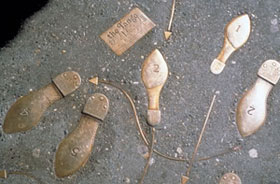
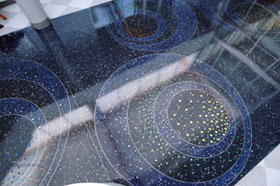
Other Public Art
The works of art commissioned and installed by the Newport News Public Art Foundation join a diverse body of public art that Newport News residents have enjoyed for many years. Here are some of the favorites among the pieces owned by museums, Christopher Newport University, the City of Newport News and private organizations. Take a driving tour of these favorites and the Foundation’s collection by downloading a brochure developed by the Newport News Tourism Development Department and Newport News Public Art Foundation.
Newport News Television Video: Art Happens in Newport News
SUPPORT PUBLIC ART
ART EVERY DAY FOR EVERYONE
We’re all about bringing the finest public art to the City of Newport News that educates, transforms, and inspires our community… and we’re looking to you for help.
